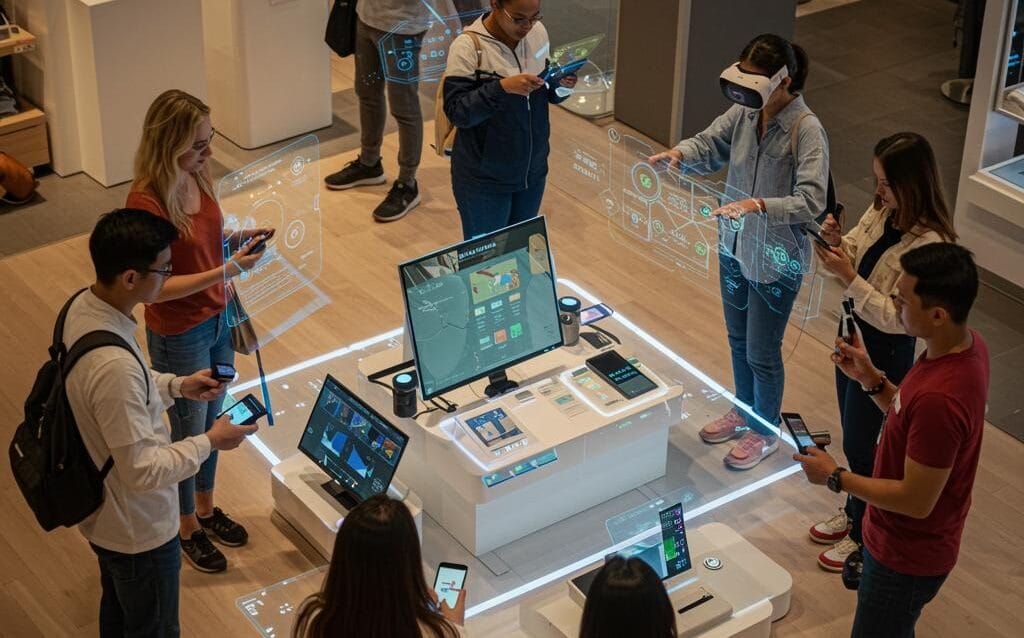AR for CX: Real-World Augmented Reality Case Studies
Augmented Reality for Customer Experience: Implementation Case Studies
Augmented Reality (AR) is no longer a futuristic fantasy; it’s a powerful tool transforming customer experiences across various industries. By overlaying digital information onto the real world, AR enhances engagement, provides personalized interactions, and ultimately drives sales and brand loyalty. This post explores how companies are successfully implementing AR to revolutionize their customer journey, illustrated with compelling case studies.
Enhancing Shopping Experiences with AR
Virtual Try-On: Revolutionizing Retail
One of the most impactful applications of AR is the virtual try-on experience, particularly in the fashion and beauty industries. Customers can virtually “try on” clothes, makeup, or accessories before making a purchase, eliminating the need for physical fitting rooms and reducing return rates.
Case Study: Warby Parker
Warby Parker, the eyewear retailer, allows customers to virtually try on glasses using their mobile app. By leveraging AR, customers can see how different frame styles look on their face from the comfort of their own home. This significantly improves the online shopping experience and reduces the hesitation associated with buying glasses online. The app uses the phone’s camera to map the user’s face and accurately overlay the glasses, allowing for realistic and informed purchase decisions.
Benefits:
- Increased customer confidence in online purchases.
- Reduced return rates due to better fit and style visualization.
- Enhanced brand engagement and customer satisfaction.
AR Product Visualization: See Before You Buy
AR enables customers to visualize products in their own environment before committing to a purchase. This is particularly beneficial for furniture, home decor, and other large items.
Case Study: IKEA Place
IKEA Place is a prime example of AR product visualization. Using the app, customers can virtually place IKEA furniture in their homes to see how it looks and fits within their existing decor. This allows for informed decisions and reduces the risk of buying furniture that doesn’t suit their space. The app accurately scales the furniture to the real world, providing a realistic representation of the product in the customer’s home.
Benefits:
- Improved customer confidence in purchasing large items online.
- Reduced return rates due to better size and style visualization.
- Enhanced customer engagement and brand perception.
Improving Customer Service with AR
AR-Powered Troubleshooting and Support
AR can transform customer service by providing interactive and visual troubleshooting guides. Customers can use their smartphone or tablet to point at a product, and the AR app will overlay instructions and animations to help them diagnose and fix problems.
Case Study: Hyundai Virtual Guide
Hyundai’s Virtual Guide app utilizes AR to provide owners with interactive manuals. By pointing their smartphone camera at different parts of their car, users can access information about specific features, maintenance procedures, and troubleshooting tips. This eliminates the need to search through lengthy paper manuals and provides a more engaging and intuitive learning experience.
Benefits:
- Reduced reliance on traditional customer service channels.
- Empowered customers to resolve issues independently.
- Improved customer satisfaction and brand loyalty.
Remote Assistance with AR
AR allows customer service representatives to remotely guide customers through complex tasks by overlaying instructions and annotations onto the customer’s view. This is particularly useful for technical support and product setup.
Case Study: PTC and Industrial Equipment Manufacturers
PTC’s Vuforia Chalk allows technicians to remotely assist customers with the repair and maintenance of complex industrial equipment. The technician can draw annotations on their screen, which are then overlaid onto the customer’s view of the equipment, providing real-time guidance and support. This reduces downtime, improves first-time fix rates, and minimizes the need for on-site visits.
Benefits:
- Reduced travel costs and response times.
- Improved first-time fix rates.
- Enhanced customer satisfaction with efficient and effective support.
Creating Immersive Brand Experiences with AR
AR Marketing Campaigns: Engaging Customers in New Ways
AR can be used to create interactive and engaging marketing campaigns that capture customers’ attention and drive brand awareness. By overlaying digital content onto physical spaces, brands can create memorable and shareable experiences.
Case Study: Pepsi MAX Unbelievable Bus Shelter
Pepsi MAX created a viral marketing campaign by transforming a bus shelter into an AR experience. Using a hidden camera and an AR display, the bus shelter appeared to show incredible events happening on the street, such as a giant robot attacking or a meteor shower. This created a buzz and generated significant social media attention for the brand.
Benefits:
- Increased brand awareness and social media engagement.
- Memorable and shareable customer experiences.
- Positive brand association and customer loyalty.
Conclusion
Augmented Reality offers a wide range of opportunities to enhance customer experiences across various touchpoints. From virtual try-on and product visualization to AR-powered troubleshooting and immersive marketing campaigns, companies are leveraging AR to improve customer engagement, drive sales, and build stronger brand relationships. By carefully considering the specific needs and pain points of their customers, businesses can strategically implement AR to create truly valuable and impactful experiences.
“`

